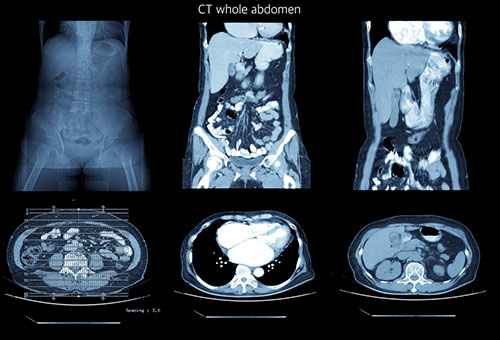How CT scans can help diagnose
and treat cancer
When CT (computed tomography) scans were invented back in 1967, it revolutionized the way that doctors were able to diagnose and treat patients. CT scans have been very useful when it comes to cancer screening and treatment, particularly in regard to colorectal cancer and lung cancer. CT scans can be used in place of a standard colonoscopy as well as lung cancer screening for high-risk patients who have a long history of heavy smoking.
CT scans can show the size and shape of a tumor as well as its location and the blood vessels that are feeding it. Doctors can then use a series of CT scans taken over a period of time to see whether or not a tumor has increased or decreased in size and if it is responding to treatment.
Doctors frequently use CT scans to help them take a biopsy of a tumor and to assist with certain localized cancer treatments such as radiofrequency ablation, cryotherapy, and the implantation of radioactive seeds. CT scans can also be used to helo plan external beam radiation therapy or surgery.
If you are scheduled for a CT scan, there may be a few things that you need to do to prepare.
Some CT scans will require the use of a contrast medium that will help doctors more easily see specific organs. This will often be given via an injection in a patient’s arm and has few side effects. Depending on the area to be scanned, you may also be asked to clear your bowels thoroughly and not eat anything before the scan.
As you can see, CT scans are an efficient and non-invasive way to diagnose cancer and can help doctors fully understand if a particular treatment is working. If your doctor has suggested a CT scan, please do not hesitate to give us a call to schedule an appointment.


